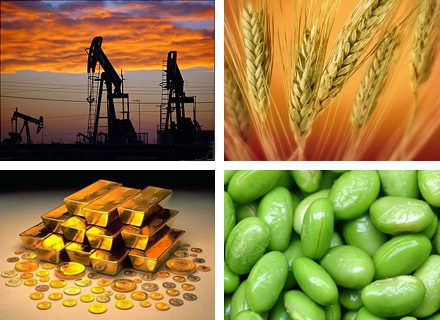China and India are about to drive diamond demand through newly affluent population. In the world diamond retail market, Asia in 2005 made up 23% of purchases. In 2020, they will make up 57%! Such growth in diamond demand should make for a sparkling future for those who invest prudently. In the infographic and copy below you will learn all about diamonds.
affluent population. In the world diamond retail market, Asia in 2005 made up 23% of purchases. In 2020, they will make up 57%! Such growth in diamond demand should make for a sparkling future for those who invest prudently. In the infographic and copy below you will learn all about diamonds.
The infographic* and copy below comes from www.visualcapitalist.com and has been made available by Lorimer Wilson, editor of www.munKNEE.com (Your Key to Making Money!). This paragraph must be included in any re-posting to avoid copyright infringement.
Diamond Demand: Economic growth and demographics
- China/India to drive diamond demand through newly affluent population. In the world diamond retail market, Asia in 2005 made up 23% of purchases. In 2020, they will make up 57%!
- By 2020, China’s GDP on a PPP (purchasing power parity) basis is forecast to grow 190% to 28 trillion! This would be the highest in the world.
- Supply is to decline as mines go deeper and underground, with no significant new mines starting production.
- 92% of world’s diamonds are cut and polished in India, mostly in the city of Surat
- 85% of world’s rough diamonds, 50% of cut diamonds, and 40% of industrial diamonds are traded in Antwerp, Belgium, the diamond centre of the world.
- 2-3% of diamonds traded today are conflict diamonds (from unstable West or central African countries where mines are controlled by rebels)
- Highest ever auction price paid for diamond: $46m for Graff Pink, a rare 24.78 carat pink diamond by Laurence Graff (UK)
- Cullinan the largest rough gem-quality diamond ever found at 3,106.75 carats (621.35g). Found in South Africa and divided into 9 polished stones. The largest stone, Cullinan I has an estimated value of $400m.
If you enjoy this site and would like every article sent automatically to you then go HERE and sign up to receive Your Daily Intelligence Report. We provide an easy “unsubscribe” feature should you decide to opt out at any time.
Spread the word. munKNEE should be in everybody’s inbox and MONEY in everybody’s wallet!
How Diamonds Form
- Kimberlite and Lamproites are carrot shaped deep-origin volcanic eruptions
- 1 in 200 volcanic pipes contain gem-quality diamonds
- Magma itself does not have diamonds, but acts as an elevator to bring up diamonds coming from depth
- Diamonds coming to earth’s surface are old, ranging from 1-3.3 billion years old. 22%-73% age of Earth.
- Formed at depths between 140 – 190km where exact conditions exist for diamond creation (temperature + pressure)
- Meteorites
- Microdiamonds can be found at meteorite impact craters. Some impact events create shock zones of high pressure and temperature suitable for diamond creation.
Diamond Properties
- Hardest natural substance on earth
- Optical properties (brilliant, lustre, color)
- Unique. Every diamond is different because they are crystals that form with different sizes, colours, and defects.
Diamond Type and Colour
Diamonds get color from their impurities or structural anomalies.
Type 1 diamonds:
- 98% of gem diamonds have Nitrogen as a key impurity, which can make them white, light yellow, or light brown.
- 0.1% have nitrogen impurities, but more diffuse, making an intense yellow or brown color.
Type 2 diamonds:
- 1.8% are entirely devoid of impurities, but have structural anomalies that can give yellow, brown, orange, pink, red, or purple colour.
- 0.1% have boron impurities, that make them blue or grey.
- Green diamonds also can occur if a diamond is exposed to radiation
Diamond mining
- Because each diamond is unique, unlike other commodities, there is another measurement that must be considered to prove an economic deposit: diamond value. Each diamond has a unique value based on size and characteristics. Companies must take a bulk sample of at least 2000 carats to give an “average” for diamond value.
- Generally all diamonds from a similar volcanic pipe have similar characteristics
Market for diamonds
- 130,000,000 carats (26,000kg) of diamonds mined annually, valued at $13B (US) – global diamond retail sales: $72B
- 30% are gem quality, 70% industrial use. Industrial diamonds are valued for hardness and thermal conductivity.
- Gem diamonds are valued for clarity, color, cut, and carat (4 C’s). Given all other factors remaining the same, more carats mean an exponential increase in value. Clarity is how pure each diamond is and the number, size, color, location, orientation and visibility of defects. Colourless diamonds (white) are graded on a scale from D to Z, with Z being light yellow. Rare and desirable colors are red, green, purple, blue, orange, and pink. Cut refers to quality of workmanship and angles to reflect maximum amount of light. Quality of cut is the most important of 4 C’s.
*http://www.visualcapitalist.com/portfolio/diamonds-clear-look-infographic (Copyright (C) 2011 Visual Capitalist)
Related Articles:
1. What’s the Difference Between 1 Gold Karat, 1 Diamond Carat and 1 Troy Ounce?
You have no doubt read countless articles on the price of gold costing “x dollars per ounce”, own a gold ring or some other piece of gold jewellery and/or wear or have bought/plan to buy a diamond ring but do you really understand exactly what you are buying? What’s the difference between 1 troy ounce of gold and 1 (regular) ounce? What’s the difference between 18 and 10 karat gold? What’s the difference between a .75 and a 1.0 carat diamond? Let me explain. Words: 1102
2. This Interactive Table of Commodity Returns Is Easy to Use – Try It
Natural resources are the building blocks of the world, essential to progress and prosperity. These commodities, like all investments, can have wide price fluctuations over time. The interactive table provided shows the ebb and flow of commodity prices over the past decade and illustrates the principle of mean reversion—the concept that returns eventually move back towards their mean or average. [Take a look.]
3. Graphite: The Newest HOT Resource Investment! Here’s Why
The word ‘fad’ doesn’t exist in the minds of true miners and prospectors. However, fads are something that people like you and I can make a lot of money investing in if we are ahead of the curve and right now I believe the graphite sector is in the early stages of the ‘fad’ and will provide a ton of profitable opportunities. [Let’s take a look at just why, where and when you should get positioned in this fast developing sector.] Words: 1535
4. Unlike Gold, Bull Market in Copper to Continue for Decades – Here’s Why
Gold and silver continue to receive the lion’s share of press headlines and investment writers’ attention. [While] our team believes this theme will continue, there are other assets which benefit from a weak dollar, especially if a weak dollar is combined with some decent economic activity. [One such asset] is copper, a base metal that, like gold and silver, [that will] appreciate with inflation and has tremendous potential for increased demand given the theme of 2012 – economic growth. [Let me explain in some detail why we think that is the case.] Words: 1150
5. Vanadium: An Infrastructure Essential With Major Potential Use in Energy Storage and Green Energy
This infographic looks at the primary uses for vanadium, its supply and demand, and future applications that could potentially affect the metal’s demand.
6. Here’s a RARE Investment Opportunity in non-Chinese (RARE), Heavy (RARE), Rare Earth (RARE) Minerals
95-97% of the supply of Rare Earth Elements (REE) – integral to the high-technology, nanotechnology, hybrid automotive, aerospace and defence industries – currently comes from China. China has continued to reduce its export quotas to the point where it will only be supplying 50% of the world’s needs by 2015. This will have a major impact on prices for each of the 17 Light (LREE) and Heavy (HREE) elements that comprise the category – and the products in which they are used – unless alternate sources of supply are found. A Canadian company has done just that and will be bringing one of the largest HREE resources in the world (44% HREE, 56% LREE) into production by 2017. Below is an infographic on the REE market and a link to a Proactive One 2One Investor Forum presentation I attended on REE market fundamentals and the development and prospects of Quest Rare Minerals Ltd. and their Strange Lake project.
7. ALL There Is to Know About Gold Is HERE!
If you own, or are contemplating owning…gold, you should read this article, and think carefully about the content of the 58 slides included with it – a presentation on the history of physical gold, its price drivers, what selected individuals think about it going forward, and what U.S. Federal Reserve Chairman Bernanke thinks of it.
8. Are You a Gold Guru? Take This Quiz & Find Out
You know it’s shiny, it’s rare and it’s the standard against which all good things are measured but how much do you really know about gold? Take the 2.0 edition of our interactive quiz to test your knowledge of gold history, geography and politics….
9. Take a Look: This Interactive Infographic Shows Gold’s Ongoing Interaction With World Events
As long as there have been people, there’s been an attraction to gold. From pharaohs to hedge funds, gold has been an important tool of building and protecting wealth. Take a look at the interactive gold timeline below which carries you through gold’s enduring path as a universal symbol of wealth.
10. This Infographic on Gold Shows/Tells It All
The Gold Tree Infographic below visualizes above-ground stock, sources and uses of gold and pictures the different forms of gold investments – ranging from physical gold in the form of bullion gold to securities not backed by gold.
11. Vaulted Gold: What Is It and How Does It Compare With Other Gold Investments?
The infographic below on vaulted gold explains what vaulted gold is and visualizes key facts relating to investments in gold that is stored on behalf of investors in high-security vaults.
12. Where in the World Does All the Gold Come From? Look at This Infographic
Gold-producing countries are found on nearly all continents, and represent the gamut of economies from developed super-powers to small, emerging market countries. With gold’s spectacular rise in price and related demand, it’s worth your time to know a little bit about where all the gold comes from.
13. Uranium: Talk About a Growth Industry!
There are 436 nuclear power reactors operating in 30 countries around the world today, providing approximately 15% of the world’s electricity, and according to the World Nuclear Association, another 50 power reactors are currently being constructed in 14 countries with over 130 more power reactors being planned and 250 more being proposed. Talk about a growing industry! Words: 776
From what we know about the many and growing market applications for tantalum, the impending supply shortage of tantalum, the present low price for tantalum and the historic high price tantalum commanded just a few years ago it is evident that the future price of tantalum has no where to go but up – big time! Words: 624
 munKNEE.com Your Key to Making Money
munKNEE.com Your Key to Making Money










